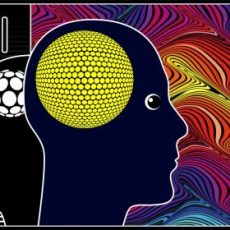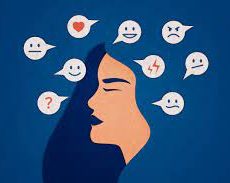According to Michael W. Passer & Ronald E. Smith, “emotions are feeling (or affect) states that involve a pattern of cognitive, physiological and behavioral reactions to events.”
Charles Darwin believed that emotions serve many adaptive functions. For instance, experiencing the emotions of fear and alarm allows us to survive in life-threatening situations. The emotions of happiness and love encourage bonding between two or more people, thereby increasing the chances of survival through being a member of a group.
Emotions also give us an external picture of another person’s internal state or of that which is going on within them. And therefore, emotions shape how we react towards others. For instance, adult expressions of sadness and discomfort evoke concern, care and helping behaviour from others. Happy Ho organizes best Meditation and Tarot classes in Noida and Delhi NCR area in India.
While positive emotions are extremely important for one’s life satisfaction, negative emotions are likely to give way to unhappiness. The ability to regulate one’s emotions is a marker of proper psychological adjustment.
But where do these emotions stem from? Several theories have tried to answer this question. Let’s first understand a few of these and later, compare and contrast them.
The James-Lange Somatic Theory. William James and Carl Lange believed that it is our physiological experiences that determine the emotions that we experience. For example, it is because of the tingling sensation in my lower limbs that I feel anxious. Today this theory lives on in the form of somatic theory of emotion.
The Cannon-Bard Theory. Walter Cannon and L.L. Bard believed that it is not the physiological state that causes the subjective experience of an emotion, rather both the physiological and emotional responses occur independently and simultaneously in response to a emotion-arousing situation. For instance, when I see someone I am attracted to, both the emotion of love and racing of my heartbeat (physiological reaction) occur at the same time and separately.
When we encounter an emotion-arousing situation, sensory information is sent to the thalamus, which sends information to the cerebral cortex (responsible for the experience of emotion) and also to the body’s internal organs (responsible for the physiological reaction).
Facial Feedback Hypothesis. Proponents of this hypothesis believe that facial muscles that play a role in emotional displays send messages to the brain which in turn uses these messages to influence the nature and intensity of the emotions that we experience. For instance, people who are forced to put up a smile at social gatherings are likely to have a better time than they would if they were to carry around a frown or a neutral expression.
Sensory input is first sent to the subcortical areas of the brain which controls the facial movements. These centers send signals that immediately activate the facial muscles. Sensory feedback from the movement of these muscles is then sent to the cerebral cortex which produces our emotions. So when I come across a lion, an expression of terror appears on my face and this feedback from our facial muscles is sent to the cerebral cortex, which generates the feeling of fear.
The following two theories that we’ll be covering in the next part, fall under the broad category of cognitive-affective theories which examine how cognitions and physiological responses relate with each other.





